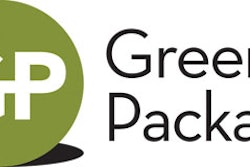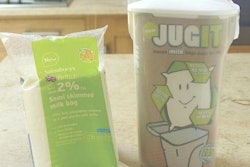Having looked into it a bit, I find that a number of industry experts
and observers—including some folks at Wal-Mart—take a dim view of
oxo-biodegradable plastic packaging.
First, a bit of semantical housekeeping. The term
“oxo-biodegradability” is a relatively new alternative to
“oxo-degradability.” When people use these terms, they’re generally
referring to a two-step process whereby—in theory at least—a
masterbatch additive reduces the molecular weight of the polymer to a
point where microorganisms can consume the degraded pieces.
These
materials are controversial for at least three reasons. First, their
earliest suppliers “overpromised and underdelivered,” as one insider
put it. The hype has left a number of people predisposed to frown on
oxo-biodegradables.
More significant, little scientific evidence has been available proving
these materials would biodegrade, i.e., be consumed by microorganisms
and returned to the ecosystem. Lately, that evidence is said to be
available from suppliers offering a range of oxo-biodegradable
polymers, including polyethylene, polypropylene, polystyrene, and PET.
However, the biodegradation these suppliers promise takes anywhere from
two to six years, depending on environmental conditions. That means
these oxo-biodegradable materials do not meet current U.S. or European
standards governing biodegradation and/or compostability.
The other fly in the oxo-biodegradable ointment revolves around what’s
referred to as “persistent chemicals.” If the additives used to promote
oxo-biodegradation in plastic packaging include cobalt, manganese, or
iron, is there a chance that these will somehow accumulate in the soil
or sea to a point where toxicity is reached? This is one of the many
questions surrounding oxo-biodegradability that needs to be addressed.
Also worth noting is that the National Advertising Division of the
Council of Better Business Bureaus on December 8 recommended that
Dallas-based GP Plastics, the maker of PolyGreen plastic bags for
newspapers, cease claiming its bags are 100% oxo-biodegradable (see
www.nadreview.org/DocView.aspx?DocumentID=7082).
I bring all of this to your attention because, despite all the
controversy, oxo-biodegradable plastic packaging is beginning to make
some commercial headway. Green Planet Bottle Corp. of Toronto has
teamed up with Wells Plastics Ltd. of the U.K. to develop Reverte™, a
proprietary technology that makes petroleum-based polymers
oxo-biodegradable “in landfills, ditches, rivers, and oceans.” First to
commercialize this new technology is Ciao Water Inc. of Boulder, CO.
The firm has no retail presence but rather sells its bottled water to
hotels, conventions, and events. Preforms are being made by Encon Inc.
of Dayton, OH. Bottles are blown and filled by Tushar Mountain
Bottling, Inc., of Beaver, UT.
Also coming out with an oxo-biodegradable PET bottle is Canadian Gold
Beverages Inc. of Marchand, Manitoba, Canada. The masterbatch additive
supplier in this case is BioSmart, also a Canadian firm. “Canadian Gold
Beverages now offers a completely biodegradable bottle, bottle cap, and
label,” says Canadian Gold’s Web site. “This is not a PLA bottle, but
instead a new proprietary technology.”
I’m in no position to pontificate one way or another where all of this
is concerned. But I do find it fascinating. You can expect to hear a
good deal more about it as it makes its way into packaging conferences
such as next month’s Nova-Pack 2009, sponsored by Schotland Business
Research. Eventually, as this debate unfolds, I’d like to think that
sound science will prevail and that these new materials will either be
scientifically endorsed or scientifically debunked. In the meantime,
you’d do well to know they could be coming to a store shelf near you.


























